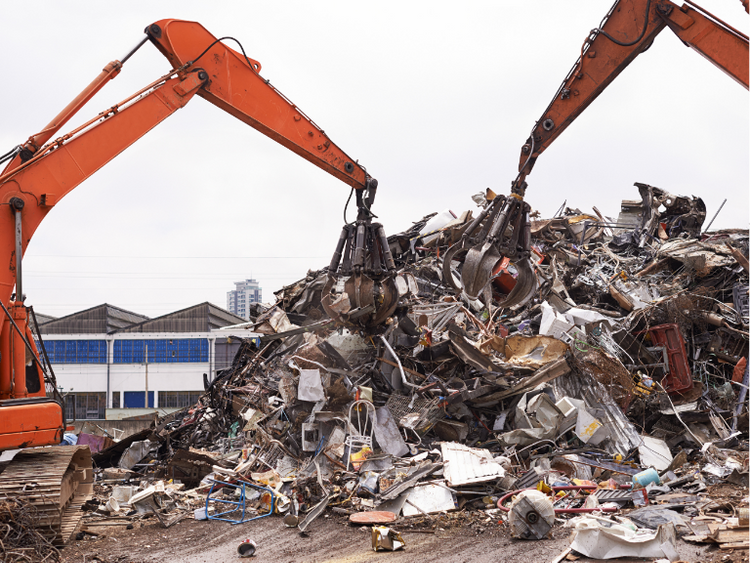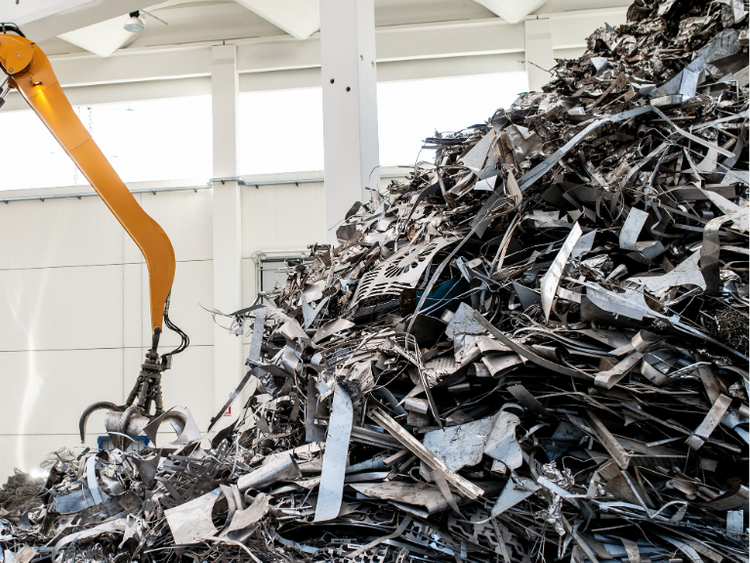Ferrous Scrap

Miller on scrap: Pig iron cost vs. #1 Busheling
Written by Stephen Miller
February 10, 2025
The US flat-rolled steel industry has relied on the use of basic pig iron for over 30 years, almost all of which has been imported. Using pig iron has been the preferred method for EAF hot-rolled-coil (HRC) producers of diluting the residual alloys and impurities present in their economically available scrap supply.
Higher pig iron costs
The use of pig iron for this purpose has come at a price since its manufacturing and logistical costs have generally exceeded the cost of using prime scrap.
This excessive cost has been much more pronounced since 2022 when the Russian invasion of Ukraine occurred and the US sanctioned pig iron imports from that country.
At the time of the imposition of sanctions, it was estimated the US steel industry relied on Russia and Ukraine for over 60% of their requirements. Needless to say, the cost of pig iron severely increased, especially in relation to prime scrap.
Going forward to 2024, the price of HRC started to decline and so did other steelmaking raw materials, including ferrous scrap.
However, due to sourcing issues brought on by the exclusion of Russian imports and the degrading of shipments from Ukraine, pig iron prices did not fall along with scrap. This resulted in an increasing spread between the cost of pig iron and prime scrap.
In fact, until the start of Q4’24, the delivered cost of imported pig iron exceeded the cost of #1 Busheling by over $100 per gross ton.
Gap narrows
The gap between these two products started to narrow during Q4’24, as competing offers from India were received by American users. The main supply base in Brazil came under pressure to match these offers.
The strengthening of the US dollar also had a role in the decline of pig iron prices. In addition, the massive exports of steel from China have weakened international demand.
What’s happening now
By the start of 2025, the gap had been narrowed to ~$62 per gross ton (gt).
As ferrous scrap prices increased by ~$20/gt in January and another ~$40/gt in February, the spread has been virtually neutralized.
Based upon the most recent purchases from South Brazil for basic pig iron at $395 per metric ton (mt) FOB Rio/Vittoria, the CFR cost to New Orleans has declined to about $420/mt.
This figure was as high as $475/mt as recently as Q2’24. In order to compare this with the delivered cost of prime scrap, other procurement costs must be considered.
These include vessel discharge, custom and port charges, barge freight, storage, ground freight, shrinkage, and financing costs. Each steelmaker has its own set of expenses for these costs depending on the mill’s location.
For most buyers located along the lower Mississippi Valley, a reasonable estimate of these costs brings the delivered price of pig iron based upon these assumptions to $467/gt.
The February price of #1 Busheling in this region rose to ~$465/gt, thereby essentially evening the playing field between the two materials.
For pig iron delivering farther north to the Upper Mississippi and Ohio River locations, the costs jump to ~$475-480/gt.
The price of busheling in these regions for February is ~$440-450/gt. So, the gap for these users has significantly narrowed. This narrowing could lead to more demand for pig iron.
It should be noted the pig iron steelmakers are using presently was purchased in October/November 2024 when pig iron prices were higher. As less expensive material is delivered, users will then realize the savings vs. scrap.
Outlook
In a recent contact SMU made with an executive in the Brazilian pig iron trade, he was of the opinion pig iron prices should rise by $20-40/gt on future sales.
Of course, this will depend on other prices offered from other pig iron exporting countries, currency fluctuations, and international business conditions, which were the main causes of the recent erosion of pig iron prices.

Stephen Miller
Read more from Stephen MillerLatest in Ferrous Scrap

HRC, prime scrap spread narrows in April
The price spread between hot-rolled coil (HRC) and prime scrap narrowed in April after widening since January, according to SMU’s most recent pricing data.

US scrap tags drop in April as tariff fog continues
US scrap prices declined in April for all the grades tracked by SMU amid tariff uncertainty, according to market sources.

Ferrous scrap prices poised for sharp declines in April
Last week, much attention was focused on President Trump’s “Liberation Day” tariffs and rightly so. They have thrown a big wrench into the market-reading business. Whether you are for them or against them, the potential outcomes are hazy, at best. Maybe we should not forget the basics, tariffs concerns notwithstanding. The basics of this ferrous […]

Scrap market chatter this month
Scrap buyers sound off on prices, demand, etc., in SMU's monthly scrap survey.

MetalX founder, former OmniSource CEO Danny Rifkin passes, funeral April 6
MetalX Founder and CEO Danny Rifkin - born in 1954 - died on April 1, surrounded by family.
